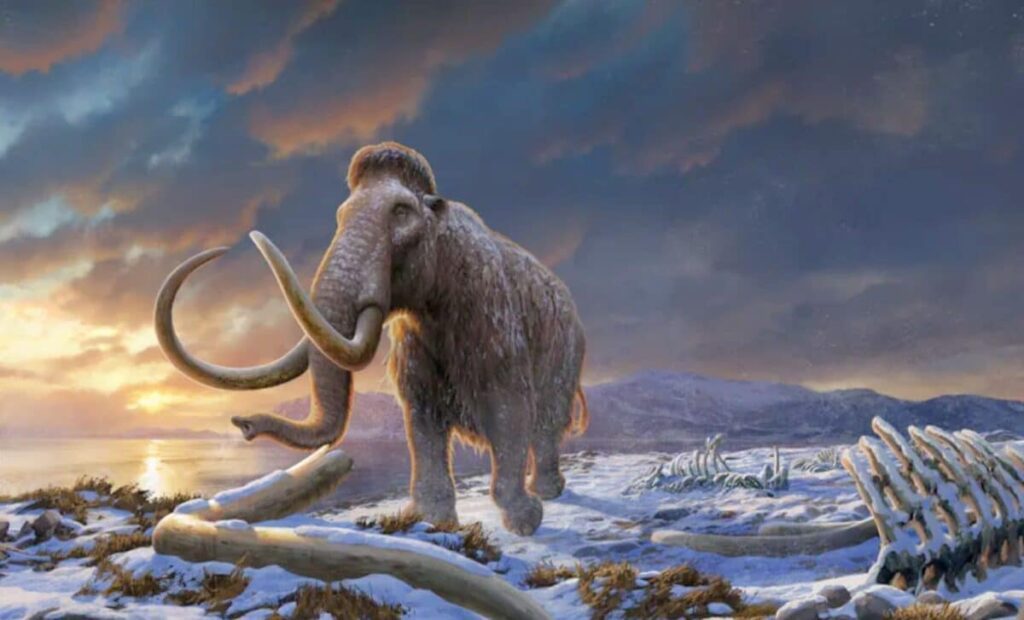Researchers have successfully sequenced the oldest RNA ever recovered from the remains of a woolly mammoth named Yuka, who died nearly 39,000 years ago. RNA degrades rapidly after death, far faster than DNA, which had long led scientists to believe it couldn’t survive for millennia.
But the preservation of Yuka’s tissues in Siberian permafrost changed that, allowing a team of geneticists to extract and analyze fragments of RNA from both skin and muscle tissue, setting a new benchmark in ancient molecular research.
Yuka’s remains were discovered in 2010, remarkably intact and frozen in the icy ground of northeastern Siberia. The young mammoth, estimated to have died at around 5 or 6 years of age, was already known to science for the quality of his preservation. Now, thanks to new techniques and a bit of luck, he’s yielded a scientific first: molecular traces of his body’s biological activity shortly before death.
This discovery is significant because, unlike DNA, which stores genetic instructions, RNA reflects the genes actively in use at a specific moment. In other words, it doesn’t just tell scientists what a mammoth was made of, it shows what it was doing.
Last Steps Imprinted In Muscle Gene Activity
The team, based at Stockholm University and SciLifeLab, uncovered RNA tied to muscle contraction and stress-induced metabolic regulation, according to a study published in Cell. These findings align with earlier physical evidence that Yuka may have been attacked by cave lions and fled into a mudhole, where he died.
Notably, only one of ten mammoth specimens analyzed yielded RNA detailed enough for sequencing. According to the researchers, Yuka’s tissue was uniquely well-preserved, making it the only sample that passed the quality threshold.

Molecular Echoes In Non-Coding RNA
Beyond the protein-coding RNA, scientists also found microRNAs, small molecules that regulate gene expression without producing proteins. These microRNAs carried rare mutations, verifying their mammoth-specific origin, says molecular bioscientist Marc Friedländer, one of the researchers involved in the project.
The detection of these regulatory molecules, especially those specific to muscle tissue, provides direct evidence of gene regulation occurring in real time at the cellular level. According to Friedländer :
“The muscle-specific microRNAs we found in mammoth tissues are direct evidence of gene regulation happening in real time in ancient times. It is the first time something like this has been achieved.”
This type of RNA had never been sequenced from such old material, making the findings a turning point in paleogenomics. It pushes the boundaries of what kinds of biological information can be recovered from ancient specimens.

One Mammoth, Many Possibilities
Although earlier studies had already succeeded in sequencing ancient DNA, including from mammoths over a million years old, the leap to RNA has long been viewed as unlikely. RNA’s quick degradation typically prevents it from surviving more than a few hundred years, let alone tens of thousands.
But Yuka’s body, preserved in permafrost and largely untouched for nearly 40,000 years, defied those expectations. According to evolutionary geneticist Love Dalén, senior author of the paper, the results show that RNA molecules can last much longer than previously believed, if the environmental conditions are right.
“This means that we will not only be able to study which genes are ‘turned on’ in different extinct animals, but it will also be possible to sequence RNA viruses, such as influenza and coronaviruses, preserved in Ice Age remains.”
This opens the door to new types of investigations, though the study also highlights how rare such finds are. Of the ten mammoths analyzed, only three showed any trace of ancient RNA, and just one roduced enough for detailed study.

